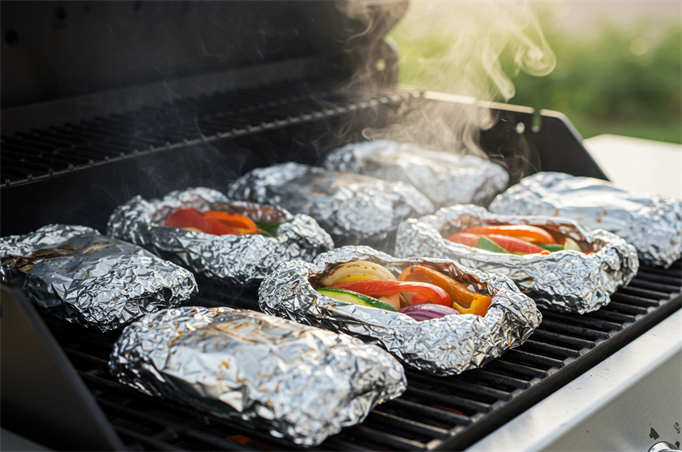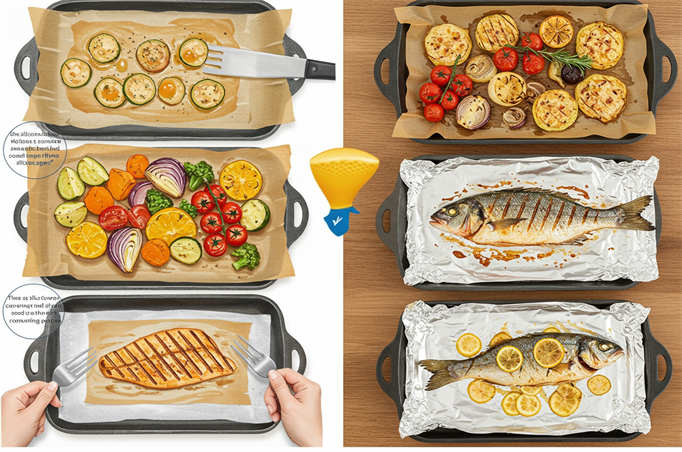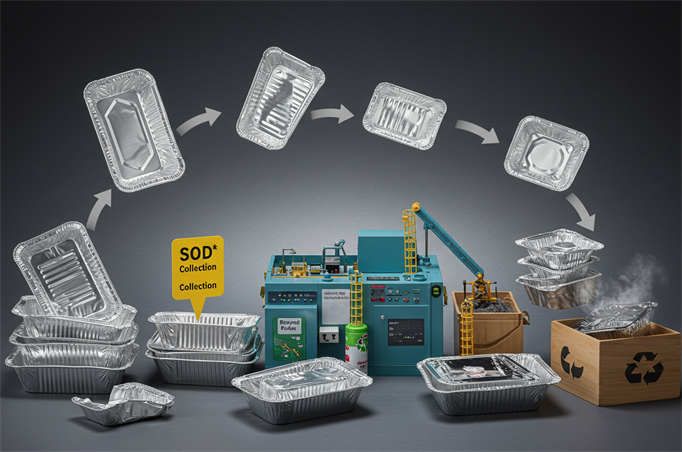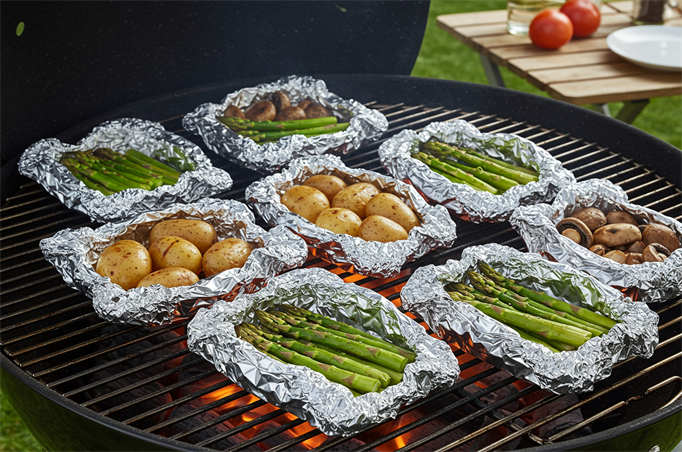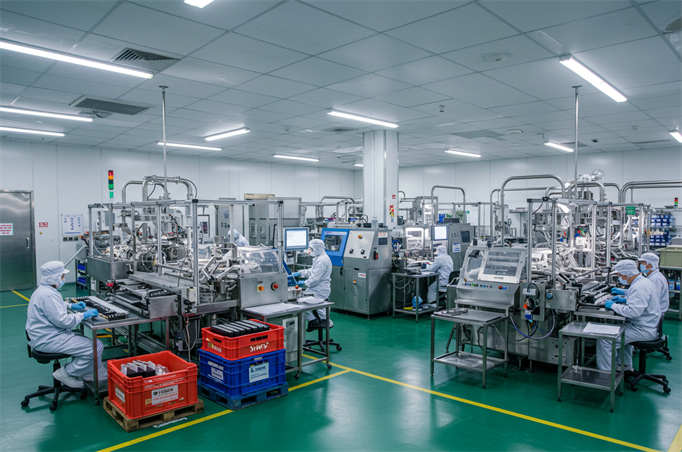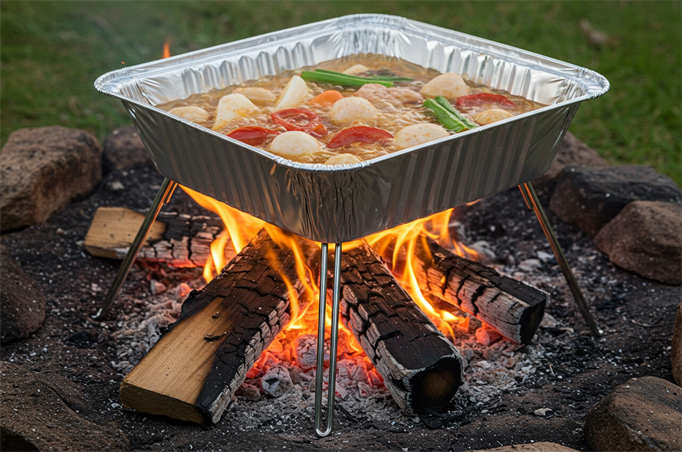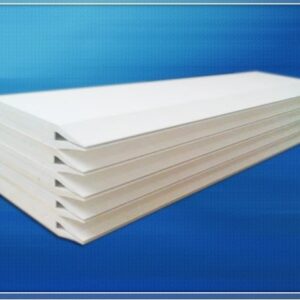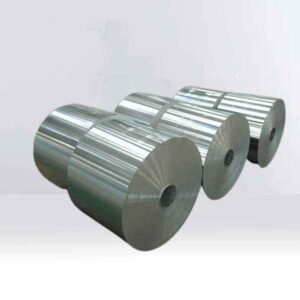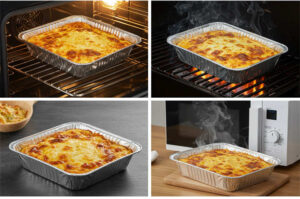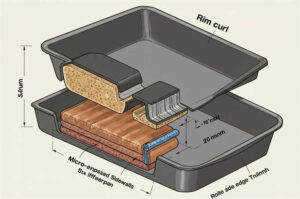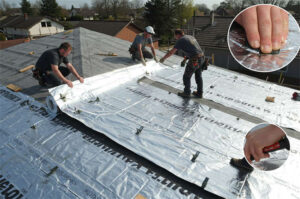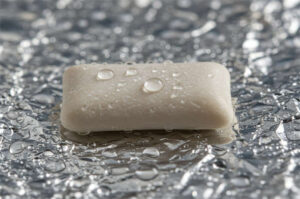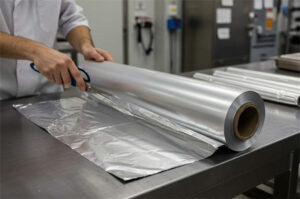When cooking or baking, choosing between parchment paper and رقائق الألومنيوم is essential—it’s not a tiny choice! Each has unique features that impact your food. Parchment paper is nonstick, while aluminum foil is strong and handles heat well. But how do you decide?
In 2025, aluminum foil will improve with nonstick and خيارات صديقة للبيئة. Parchment paper continues to be favored for its ease of use and safety. Whether baking cookies or roasting veggies, understanding the differences between parchment paper and aluminum foil can help your food turn out better and reduce waste. Let’s explore this further!
الوجبات الرئيسية
- Parchment paper doesn’t stick and works well for baking cookies. It can handle heat up to 450°F without burning.
- Aluminum foil is substantial for high-heat cooking, like grilling. You can also reuse it to wrap food to keep it fresh.
- To avoid harmful chemicals, choose unbleached parchment paper. Also, avoid using aluminum foil with sour foods to prevent dangerous reactions.
- Use parchment paper for baking and foil for roasting or grilling. هذا makes cleaning easier and gives better results.
- Try eco-friendly options like silicone mats or compostable wraps to cut down on waste in your kitchen.
What is Parchment Paper?
Properties and Features
Parchment paper is a must-have in the kitchen. It’s made from cellulose fibers and coated with silicone for a nonstick surface. It’s thin, resists grease, and handles high heat well. Unlike aluminum foil, it doesn’t transfer heat, so it’s excellent for baking delicate foods.
The need for parchment paper is growing fast. In 2023, the vegetable parchment paper market was worth $1.33 billion. By 2031, it’s expected to reach $2.25 billion, growing 6.8% each year. هذا shows how useful and eco-friendly it is. Around 25% of parchment paper is made for food-safe uses, demonstrating its value in kitchens everywhere.
Eco-friendliness is changing the market. Compostable parchment with 30% recycled fiber is becoming popular in Europe. By 2026, it may take up 28% of the market. But making parchment paper isn’t easy. Over 70% depends on sulfate wood pulp from Nordic countries and Canada, and these materials are scarce.
Best Uses in Cooking and Baking
Parchment paper is helpful in homes and businesses. Home bakers like it, because it’s easy to use and clean, and professional bakers, use it for consistent results.
| Application Type | الوصف | Growth Dynamics |
|---|---|---|
| Residential | Home bakers use it for easy cleanup and convenience. | Growing fast due to online cooking trends. |
| Commercial | Used in bakeries and restaurants for quality and speed. | High demand for efficiency and consistency. |
Use parchment paper for cookies, lining pans, or making pastries. It keeps food from sticking or burning.
Heat Resistance and Nonstick Benefits
Parchment paper can withstand heat up to 450°F, making it great for baking and roasting. Its nonstick surface means you don’t need to grease pans, saving time and effort.
Unlike رقائق الألومنيوم, parchment paper doesn’t react with acidic foods, keeping food tasting as it should. It’s safer for recipes like roasted veggies or fish cooked on paper.
نصيحة: Always check the heat limit on the package to avoid burning your parchment paper.
Safety and Environmental Impact
When picking parchment paper, think about safety and the environment. It’s handy in the kitchen but not always eco-friendly or safe.
Environmental Concerns
Most parchment paper has a silicone layer to make it nonstick. This coating stops it from being compostable. Throwing it away adds to waste. For greener choices, some brands sell uncoated or compostable parchment paper.
| Concern Type | الوصف |
|---|---|
| الأثر البيئي | Silicone-coated parchment paper isn’t compostable, adding to trash. |
المخاطر الصحية
Bleached parchment paper might contain dioxin, a harmful chemical. Silicone coatings can release toxins into food at high heat. Some parchment papers also contain PFAS, which are linked to health problems.
- Dioxin in bleached parchment paper may cause health issues.
- Silicone coatings can release harmful chemicals at high heat.
- PFAS, in some parchment papers, is tied to long-term risks.
نصيحة: Use unbleached parchment paper and avoid overheating it for safety.
Consider these points to make better choices for your health and the planet. Choose eco-friendly options when you can, and always read labels for safety details.
What is Aluminum Foil?
Properties and Features
Aluminum foil is a thin, bendable metal sheet used in kitchens. It’s light but strong, making it great for many tasks. It spreads heat evenly and doesn’t rust, which makes it unique. Did you know it also blocks moisture and smells? That’s why it’s perfect for storing food.
Here’s a simple breakdown of its main features:
| الممتلكات | التفاصيل |
|---|---|
| السُمك | Usually 0.2 mm or less; 0.01-0.1 mm is common for cooking. |
| التوصيل الحراري | 235 W/m.K, helping heat spread evenly. |
| مقاومة التآكل | Doesn’t rust because of its protective oxide layer. |
| Impermeability | Stops moisture, light, and smells, even when very thin. |
| تشطيب السطح | One side is shiny, the other is dull, based on how it’s made. |
Its flexibility makes it useful not just in kitchens but also in industries like building and space travel.
Best Uses in Cooking and Baking
You might use aluminum foil to wrap leftovers, but it does more. It’s great for baking fish, roasting veggies, or crispy cookies. Restaurants and hotels often use it to prepare and store meals, especially with more takeout orders.
Here are some common ways to use it:
- Wrap and store food to keep it fresh longer.
- Bake fish or chicken to keep them moist and tasty.
- Line baking pans to make cookies crispier.
- Cover dishes to stop them from burning while cooking.
Aluminum foil is also popular in recipes and cooking shows because it’s easy to use and handles heat well.
Heat Resistance and Durability
Aluminum foil works in both hot ovens and cold freezers. Its shiny surface reflects heat, making it great for keeping food warm. Whether roasting at 400°F or freezing leftovers, it stays strong.
إنه also tough and doesn’t tear easily, so you can wrap juicy foods without leaks. Its reflective side keeps heat in, so your food stays warm longer.
نصيحة: Use the shiny side to reflect heat when cooking and the dull side to absorb heat better.
When compared to parchment paper, aluminum foil is stronger and handles heat better. It’s the best choice for grilling or roasting at high temperatures.
Safety and Health Considerations
Is رقائق الألومنيوم safe for cooking? Research says it’s mostly safe. You can use it for food storage and cooking without worry. But there are a few things to remember for better health choices.
Does Aluminum Leach Into Food?
ألومنيوم can move into food, but it’s not a big deal. Studies show only a tiny amount of transfers, which is unlikely to harm you. Experts say الألومنيوم in food isn’t linked to cancer. Some people think الألومنيوم causes Alzheimer’s, but there’s no proof of this.
ملاحظة: Acidic foods like tomatoes or lemons can increase الألومنيوم transfer. When cooking these, use parchment paper as a barrier.
High-Heat Cooking and Safety
رقائق الألومنيوم works well with high heat but avoid salty or acidic dishes. These can break the foil faster and increase الألومنيوم exposure. It’s a strong choice for grilling or roasting. Just handle it carefully to prevent tearing or contamination.
Environmental and Health-Friendly Tips
Want safer and greener options? Choose heavy-duty or food-grade رقائق الألومنيوم. These types reduce leaching and last longer. Reuse foil when possible or recycle it to cut waste.
Follow these tips to use رقائق الألومنيوم safely while caring for your health and the planet.
Parchment Paper vs Aluminum Foil: Key Differences
Heat Resistance Comparison
Parchment paper and aluminum foil handle heat differently. Parchment paper is safe up to 450°F. It’s great for baking cookies or roasting veggies. But it can burn if the heat is too high. Aluminum foil doesn’t have a set heat limit. It’s perfect for broiling, grilling, or open-flame cooking.
For delicate foods like fish, parchment paper is better. It doesn’t transfer heat as strongly as foil. Aluminum foil works best for roasting meat at high heat.
Nonstick Properties
Parchment paper is naturally nonstick because of its silicone coating. You don’t need extra grease, making it great for baking. Aluminum foil isn’t nonstick on its own. You’ll need to add oil or butter to stop food from sticking.
Sticky foods like caramelized veggies are easier with parchment paper, which also saves time cleaning pans. Aluminum foil is better for grilling or tasks where sticking isn’t a problem.
Reusability and Environmental Impact
Aluminum foil can be reused for some tasks, like wrapping food, while parchment paper is usually for one-time use only.
Parchment paper, especially uncoated types, is often compostable. Aluminum foil can be recycled but must أن يتم تنظيفها first. To reduce waste, use parchment paper for composting and foil for recycling.
Here’s a quick comparison to guide you:
| الميزة | ورق البرشمان | رقائق الألومنيوم |
|---|---|---|
| حد درجة الحرارة | Safe up to 450°F | No specific limit |
| Nonstick Properties | Naturally nonstick | Needs oil or spray for nonstick |
| Cleaning Benefits | Cuts down cleaning time | Protects pans from grease |
| تعدد الاستخدامات | Best for lining pans and baking sheets | Easy to shape for many uses |
نصيحة: Use parchment paper for baking and foil for high-heat cooking. هذا helps you get great results and reduce waste.
Safety and Health Factors
When cooking, it’s essential to use safe materials. Both parchment paper and aluminum foil have advantages and disadvantages. Knowing these can help you choose wisely.
Parchment paper is safe for baking and cooking. But avoid bleached parchment paper. It might have harmful chemicals called dioxins. Unbleached parchment paper is a better choice. Also, check if it contains PFAS. These chemicals can harm the environment and may affect health. Pick brands that say they are PFAS-free.
Aluminum foil is also helpful but has some risks. Small amounts of aluminum can get into your food when cooking. هذا is usually fine, but acidic foods like tomatoes or lemons can increase this. To be safer, put parchment paper between the food and foil. هذا creates a barrier and lowers the risk.
رقائق الألومنيوم strong and works well for high heat. But don’t use it with salty or acidic foods. Parchment paper is better for baking or low-heat cooking. It doesn’t react with food, making it safer for delicate recipes.
Learn the pros and cons of parchment paper and aluminum foil to make better choices. Always read labels and choose products that focus on safety.
When to Use Parchment Paper vs Aluminum Foil
Baking Scenarios
For baking, pick parchment paper or aluminum foil based on your recipe. Use parchment paper for cookies, cakes, and pastries. Its nonstick surface helps baked goods slide off easily. It can handle heat up to 450°F, so it’s great for most recipes. Cleanup is simple, and you don’t need to grease pans.
Aluminum foil is better for crispy textures. It helps food brown, making it perfect for roasted potatoes or chicken wings. Be careful with salty or acidic foods; they can react with foil and change the taste of delicate items like cheesecake. Place foil under parchment paper. هذا gives extra support when lifting it out of the pan.
نصيحة: Use parchment paper for easy cleanup and foil for crispy results.
Roasting and Grilling Scenarios
Aluminum foil is best for roasting and grilling. It’s strong, heat-resistant, and works well in ovens or grills. Wrap vegetables, fish, or meat in foil to keep them moist and flavorful. You can also line grill grates with foil to stop food from sticking or falling through.
Parchment paper isn’t good for grilling or broiling. It can burn at very high heat. But it’s great for roasting veggies or fish in the oven at medium heat. Its nonstick surface makes cleanup easy and prevents food from sticking to pans.
ملاحظة: Use foil for grilling. For oven roasting, use parchment for delicate foods and foil for high heat.
Food Storage and Wrapping Scenarios
رقائق الألومنيوم a great choice for storing and wrapping food. It seals tightly over bowls or containers, keeping food fresh and stopping odors. It’s also good for wrapping sandwiches or leftovers in the fridge or freezer. But don’t use foil in the microwave—it’s not safe.
Parchment paper is less airtight but still sound. It’s great for wrapping baked goods or lining containers. Its grease-proof surface is perfect for cookies, pastries, or sticky treats. Unlike foil, it won’t stick to your food, which is helpful for delicate items.
نصيحة: Use foil for sealing and freezing and parchment for wrapping baked goods or microwaving.
Tips for Choosing the Right Material
Choosing between parchment paper and aluminum foil doesn’t have to be tricky. It all comes down to what you’re cooking or baking. Here are some simple tips to help you decide:
- Think about the heat level: Aluminum foil is your best friend if you’re grilling or broiling. It handles high heat like a pro and won’t catch fire.
- “Grill or broil, go with foil. Aluminum foil shines with high-heat cooking, like grilling and broiling.”
- Consider the type of food: For cookies, cakes, or anything delicate, parchment paper is the way to go. Its nonstick surface ensures your baked goods slide off without sticking or burning.
- “When baking cookies, you should always reach for parchment paper over aluminum foil. Aluminum foil can transfer high temperatures quickly, causing the bottom of your cookies to burn before they’ve had a chance to cook all through.”
- Think about cleanup: Do you hate scrubbing pans? Parchment paper saves you time. It’s perfect for lining baking sheets and catching drips. Aluminum foil also helps clean up, especially when roasting or grilling greasy foods.
- Check for moisture: Parchment paper resists moisture, making it great for baking. On the other hand, aluminum foil seals tightly and locks in juices, which is ideal for roasting meats or steaming veggies.
“Parchment paper is a godsend for baking when you want cookies to slide right off the cookie sheet. It’s nonstick, heat- and moisture-resistant, and helps promote even cooking.”
- Keep safety in mind: Avoid using aluminum foil with acidic foods like tomatoes or citrus. These can cause the foil to break down and affect the taste. For these dishes, parchment paper is a safer choice.
نصيحة: When in doubt, remember this rule of thumb: Use parchment paper for baking and aluminum foil for high-heat cooking. It’s a foolproof way to get the best results every time.
By remembering these tips, you’ll always know which material to use for your next culinary adventure.
Alternatives to Parchment Paper and Aluminum Foil
Looking for reusable or eco-friendly options? There are great substitutes for parchment paper and aluminum foil. These choices help reduce waste and offer unique cooking, baking, and storing food benefits.
مفارش خبز سيليكون
Silicone baking mats are super helpful in the kitchen. They’re reusable, strong, and very flexible. Use them for baking cookies, roasting veggies, or kneading dough. Their nonstick surface means no extra oil or sprays, making cleanup easy.
- They handle high heat, so they’re great for baking or broiling.
- Heat spreads evenly on silicone mats, perfect for delicate treats like macarons.
- They last longer than parchment paper, saving you money over time.
Fun Fact: Silicone mats cut the need for cooking sprays by 40% and can be reused three times more than parchment paper.
If you care about the environment, silicone mats are a great choice. They’re simple to clean—wipe or rinse—and help reduce disposable waste in your kitchen.
Wax Paper
Wax paper is another good option. It’s coated with wax, making it grease-resistant and nonstick. While it’s not for high heat, it’s great for wrapping food or lining surfaces.
- Wrap sandwiches, cookies, or snacks with it.
- Use it for rolling dough or covering counters during messy tasks.
- Wax paper is more popular now because of the rise in home baking.
نصيحة: Wax paper is perfect for baking cookies and pastries, giving an easy-release surface for your treats.
Remember, wax paper isn’t heat-safe. Could you not use it in ovens or microwaves?
Butcher Paper
Butcher paper is thicker and stronger than parchment paper. It’s great for wrapping meats or foods that release juices. Its breathable design keeps food fresh and avoids sogginess.
- The wax layer resists moisture well.
- White butcher paper is safe for food contact and is FDA-approved.
- It’s tougher than aluminum foil so that it won’t tear easily.
Pro Tip: Use butcher paper for smoking meats. It keeps moisture in while letting smoke flavor the food.
Butcher paper is a smart choice for grilling or storing meat. It’s strong, safe, and valuable for many kitchen tasks.
Other Sustainable Options
Want to go green in the kitchen? There are many eco-friendly choices to replace parchment paper and aluminum foil. These options help the planet and work well for cooking and storage. Let’s check them out!
Compostable packaging is a great choice. It breaks down naturally and doesn’t harm the environment. Use it to wrap food or line baking trays. This reduces waste and helps the earth. Another terrific option is upcycled packaging. It turns old materials into new products, saving resources and reducing trash.
| Type of Packaging | الوصف | Environmental Benefit |
|---|---|---|
| Compostable Packaging | Breaks down naturally without harming nature. | Reduces waste and helps the earth. |
| Upcycled Packaging | Reuses old materials to make new products. | Saves resources and cuts trash. |
You can also try bioplastics. These مصنوعة from plants like corn or sugarcane. They’re eco-friendly and work well for food packaging. Bioplastics are a smart way to lower environmental harm and replace traditional plastics.
Fun Fact: Using sustainable materials like these can reduce your carbon footprint and save water. Small changes can make a significant impact!
Reusable items like beeswax wraps أو cloth food covers are also great. They’re washable, last a long time, and replace single-use plastics. Plus, they come in fun designs to brighten your kitchen!
By switching to these eco-friendly options, you’re helping the planet and making your kitchen more stylish. Why not start today? 🌱
Picking between parchment paper and aluminum foil is simple. Both have unique benefits. Parchment paper is excellent for baking because it’s nonstick and safe. Aluminum foil works best for high-heat cooking and storing food.
Here’s a quick comparison to guide you:
| الميزة | ورق البرشمان | رقائق الألومنيوم |
|---|---|---|
| Main Use | Best for baking and cooking | Ideal for wrapping and high-heat tasks |
| Safety Notes | Safe for most uses | Small risks from aluminum exposure |
| Popularity | Gaining fans among home bakers | A long-time kitchen favorite |
نصيحة: Use parchment paper for baking cookies and foil for grilling or storing leftovers.
What do you prefer to use in your kitchen? Share your thoughts or ask questions below. Let’s chat! 😊
الأسئلة الشائعة
What’s the difference between parchment paper and aluminum foil?
Parchment paper doesn’t stick and works well for baking. Aluminum foil is tougher and handles higher heat, so it’s better for grilling or roasting.
نصيحة: Use parchment for baking cookies and foil for roasting veggies.
Can you reuse parchment paper or aluminum foil?
Aluminum foil can be reused if it’s still clean and not torn. Parchment paper is usually for one-time use, but you can reuse it for simple tasks like baking cookies.
ملاحظة: Don’t reuse parchment paper for oily or sticky foods.
Is aluminum foil safe for cooking?
Yes, it’s safe for most foods. But don’t use it with acidic foods like tomatoes or lemons. These can cause aluminum to mix with your food.
Pro Tip: Use parchment paper under acidic foods to stay safe.
Can parchment paper go in the microwave?
Yes, parchment paper is safe to use in the microwave. It doesn’t heat up or react with food like aluminum foil does.
Warning: Never put aluminum foil in the microwave—it can cause a fire!
Which is more eco-friendly: parchment paper or aluminum foil?
Uncoated parchment paper is better for the environment because it can be composted. Aluminum foil can be recycled, but only if it’s clean.
| المواد | Eco-Friendly Option |
|---|---|
| ورق البرشمان | Pick uncoated, compostable types. |
| رقائق الألومنيوم | Recycle only clean foil. |
نصيحة: Try reusable silicone mats for an even greener choice!


